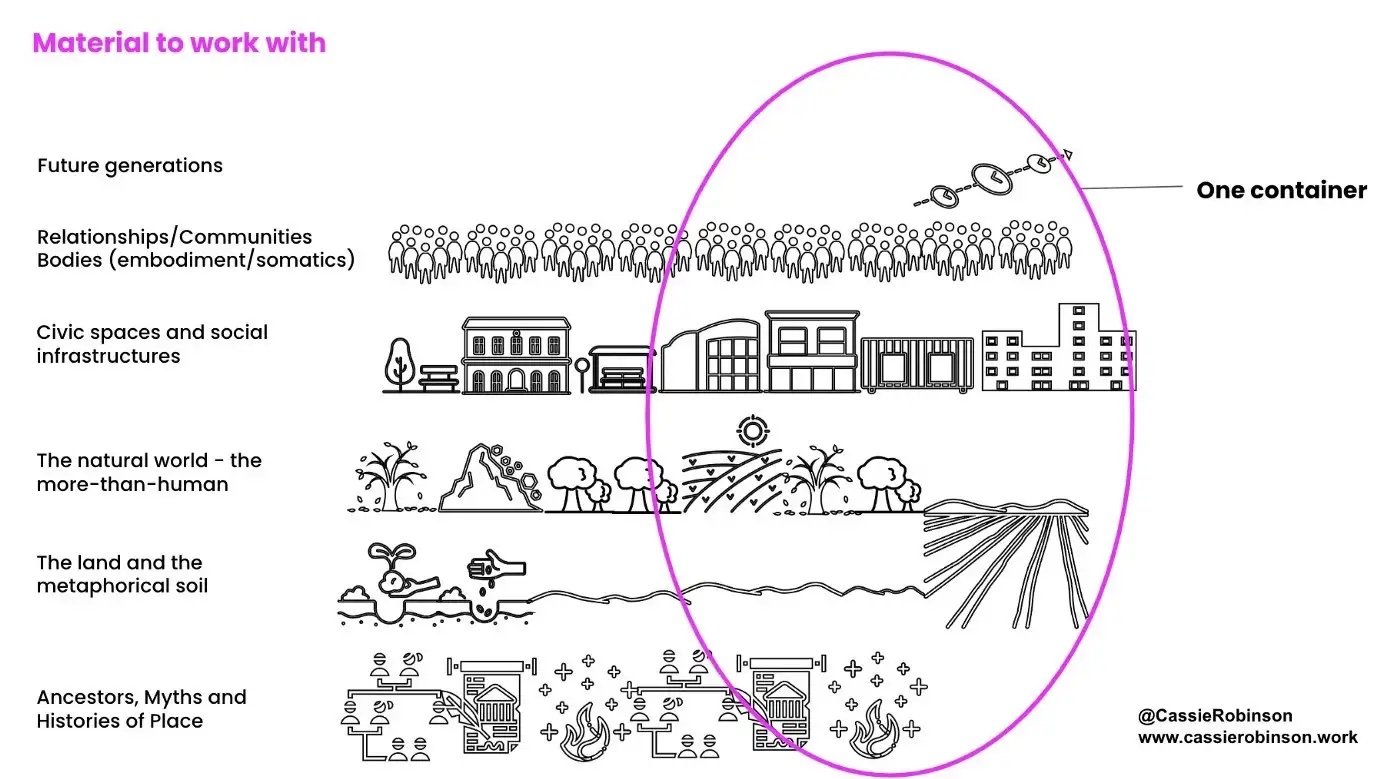If a community builds its “imagination infrastructure”, asks Cassie Robinson, what materials does it need? And what ambitions does it raise?
From “Of(f) the tracks: the legacy of colonial railway infrastructures”, Cape Town, in Future Architectures
What would an “imagination infrastructure” be? The phrase has been taken up by the social action thinker (and funder) Cassie Robinson in a recent blog, and we were intrigued and gratified by it.
Our notion of CANs (citizens action or community agency networks) has had a strong component of “futuring” and “imagining” in it from the beginning - seeking buildings, practices and technology that can be a platform for common visioning in a community (see the archive here). Cosmo-localism is one form that local imagineering could take - practical steps taken in your familiar environs, but drawing down from a global commons of methods and peers.
Cassie has usefully defined in this blog - drawing from these slides in a recent presentation - what she means by imagination infrastructure:
Often collective imagination practitioners are using many of these materials within a ‘container’ of practice:
Cassie then draws out “the kinds of infrastructures that make up Imagination Infrastructures”:
She continues:
I think Imagination Infrastructures need —
Infrastructure for sense-making because what gets imagined needs collectively interpreting and translating.
Infrastructure for content creation because what gets imagined and then interpreted and translated needs documenting, visualising, socialising. Practices also need documenting and sharing into a commons.
Infrastructure for developing practices for collective imagination, like the Community of Practice we’ve created.
Infrastructure for sites of practice. We have town halls and community centres and forests and public parks — how can our social infrastructures and our natural world infrastructures be used for collective imagination activities. The Centre for Collective Imagination is one of the sites we are trying this at a neighbourhood level.
Relational infrastructure because we need people and communities taking part and becoming the practitioners themselves, who grow their capacity to imagine together over time and draw on that to shape their futures.
Archive infrastructure because gathering the content of people’s collective imagination over time, and archiving it well, will mean it can be drawn on over time, again and again. For me this is one of the ways that collective wisdom and perpetual participation in a community could be developed and how to avoid multiple one-off engagements, deliberations or worse still, ‘consultations.’
It was interesting to come across this blog by DemSoc last month who talk about something similar for Democratic Infrastructure — though I think we need the imaginative work to be happening in the soil, further upstream from deliberative work.
Resource infrastructure that brings in all the resources needed for all of the above to happen.
For me this is one of the ways that collective wisdom and perpetual participation in a community could be developed and how to avoid multiple one-off engagements, deliberations or worse still, ‘consultations.’
All of the above needs to happen over time — that is the point of infrastructuring. It’s a long-term investment — it creates capacity, connects activity and people up as the work grows — and strengthens it over time. It’s a commitment for the long-haul.
More here. We should also mention the “imagination activism” practices of Rob Hopkins and Phoebe Tickell as complementary methods here. Also acknowledging early AUK advisor Indy Johar for coining the phrase, ‘imagination infrastructure’.



